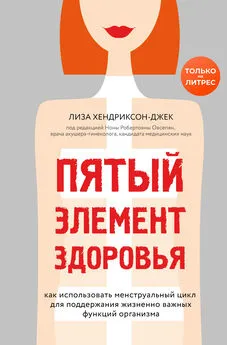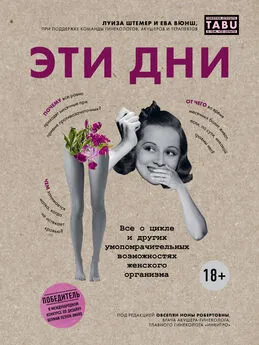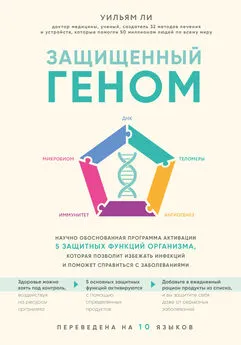Лиза Хендриксон-Джек - Пятый элемент здоровья. Как использовать менструальный цикл для поддержания жизненно важных функций организма
- Название:Пятый элемент здоровья. Как использовать менструальный цикл для поддержания жизненно важных функций организма
- Автор:
- Жанр:
- Издательство:Литагент 5 редакция
- Год:2020
- Город:Москва
- ISBN:978-5-04-104425-1
- Рейтинг:
- Избранное:Добавить в избранное
-
Отзывы:
-
Ваша оценка:
Лиза Хендриксон-Джек - Пятый элемент здоровья. Как использовать менструальный цикл для поддержания жизненно важных функций организма краткое содержание
«Почти» – потому что у женщин есть пятый показатель здоровья, на который, к сожалению, все еще мало кто обращает внимание, – это менструальный цикл. Короткий или длинный, регулярный или непредсказуемый – цикл может быть очень разным, и каждый его параметр, каждое изменение служат индикатором той или иной проблемы в организме. Планируете вы беременность или нет, овуляция имеет значение для поддержания здоровья.
Автор этой книги расскажет, что именно влияет на состояние менструального цикла, и научит вас составлять его график для максимально точного и удобного отслеживания различных изменений и контроля здоровья.
Пятый элемент здоровья. Как использовать менструальный цикл для поддержания жизненно важных функций организма - читать онлайн бесплатно ознакомительный отрывок
Интервал:
Закладка:
45. Jensen, Allan Astrup, and Henrik Leffers. “Emerging endocrine disrupters: perfluoroalkylated substances.” International Journal of Andrology 31, no. 2 (2008): 161–169.
46. Glassmeyer, Susan T., Edward T. Furlong, Dana W. Kolpin, Angela L. Batt, Robert Benson, J. Scott Boone, Octavia Conerly et al. “Nationwide reconnaissance of contaminants of emerging concern in source and treated drinking waters of the United States.” Science of the Total Environment 581 (2017): 909–922.
47. Conley, Justin M., Nicola Evans, Heath Mash, Laura Rosenblum, Kathleen Schenck, Susan Glassmeyer, E.T. Furlong, Dana W. Kolpin, and Vickie S. Wilson. “Comparison of in vitro estrogenic activity and estrogen concentrations in source and treated waters from 25 US drinking water treatment plants.” Science of the Total Environment 579 (2017): 1610–1617.
48. Wang, H., Z. Yang, B. Zhou, H. Gao, X. Yan, and J. Wang. “Fluoride-induced thyroid dysfunction in rats: roles of dietary protein and calcium level.” Toxicology and Industrial Health 25, no. 1 (2009): 49–57.
49. Bennetau-Pelissero, Catherine. “Risks and benefits of phytoestrogens: where are we now?” Current Opinion in Clinical Nutrition & Metabolic Care 19, no. 6 (2016): 477–483.
50. James, Clive. “Global status of commercialized biotech/GM crops: 2014.” ISAAA Brief 49 (2015).
51. Cassidy, Aedin, Sheila Bingham, and Kenneth Setchell. “Biological effects of isoflavones in young women: importance of the chemical composition of soyabean products.” British Journal of Nutrition 74, no. 4 (1995): 588.
52. Fernandez-Lopez, Adrian, Valérie Lamothe, Mathieu Delample, Muriel Denayrolles, and Catherine Bennetau-Pelissero. “Removing isoflavones from modern soyfood: Why and how?” Food Chemistry 210 (2016): 286–294.
53. Fucic, Aleksandra, Marija Gamulin, Zeljko Ferencic, Jelena Katic, Martin Krayer von Krauss, Alena Bartonova, and Domenico F. Merlo. “Environmental exposure to xenoestrogens and oestrogen related cancers: reproductive system, breast, lung, kidney, pancreas, and brain.” Environmental Health 11 (2012): 1–9; Fernandez, Sandra Viviana, and Jose Russo. “Estrogen and xenoestrogens in breast cancer.” Toxicologic Pathology 38, no. 1 (2010): 110–122; Diamanti– Kandarakis, Evanthia, Jean-Pierre Bourguignon, Linda C. Giudice, Russ Hauser, Gail S. Prins, Ana M. Soto, R. Thomas Zoeller, and Andrea C. Gore. “Endocrine-disrupting chemicals: an Endocrine Society scientific statement.” Endocrine Reviews 30, no. 4 (2009): 293–342.
54. Monteiro, Carlos Augusto, Geoffrey Cannon, Jean-Claude Moubarac, Renata Bertazzi Levy, Maria Laura C. Louzada, and Patrícia Constante Jaime. “The UN Decade of Nutrition, the NOVA food classification and the trouble with ultra– processing.” Public Health Nutrition 21, no. 1 (2018): 5–17; Leevy, Carroll M., and Şerban A. Moroianu. “Nutritional aspects of alcoholic liver disease.” Clinics in Liver Disease 9, no. 1 (2005): 67–81.
55. Rosenberg, I.H., S.A. Abrams, G.R. Beecher, Catherine Champagne, Fergus Clydesdale, Jeanne Goldberg, Penny Kris– Etherton et al. “Dietary reference intakes: guiding principles for nutrition labeling and fortification.” Washington (DC): National Academies Press (US); 2003. 3, Overview of Food Fortification in the United States and Canada: 45–55.
56. Government of Canada, Canadian Food Inspection Agency. “Prohibition against the sale of unenriched white flour and products containing unenriched flour.” Accessed September 4, 2017. www.inspection.gc.ca/food/labelling/food-labelling– for-industry/grain-and-bakery-products/unenriched-flour/eng/1415915977878/1415915979471.
57. Schulze, Matthias B., Kurt Hoffmann, JoAnn E. Manson, Walter C. Willett, James B. Meigs, Cornelia Weikert, Christin Heidemann, Graham A. Colditz, and Frank B. Hu. “Dietary pattern, inflammation, and incidence of type 2 diabetes in women.” The American Journal of Clinical Nutrition 82, no. 3 (2005): 675–684; Ludwig, David S., Joseph A. Majzoub, Ahmad Al-Zahrani, Gerard E. Dallal, Isaac Blanco, and Susan B. Roberts. “High glycemic index foods, overeating, and obesity.” Pediatrics 103, no. 3 (1999): e26; Malik, Vasanti S., Matthias B. Schulze, and Frank B. Hu. “Intake of sugar-sweetened beverages and weight gain: a systematic review.” The American Journal of Clinical Nutrition 84, no. 2 (2006): 274–288.
58. Hatch, Elizabeth E., Amelia K. Wesselink, Kristen A. Hahn, James J. Michiel, Ellen M. Mikkelsen, Henrik Toft Sorensen, Kenneth J. Rothman, and Lauren A. Wise. “Intake of sugar-sweetened beverages and fecundability in a North American preconception cohort.” Epidemiology 29, no. 3 (2018): 369–378.
59. Fenster, Laura, Chris Quale, Kirsten Waller, Gayle C. Windham, Eric P. Elkin, Neal Benowitz, and Shanna H. Swan. “Caffeine consumption and menstrual function.” American Journal of Epidemiology 149, no. 6 (1999): 550–557; Kotsopoulos, Joanne, A. Heather Eliassen, Stacey A. Missmer, Susan E. Hankinson, and Shelley S. Tworoger. “Relationship between caffeine intake and plasma sex hormone concentrations in premenopausal and postmenopausal women.” Cancer 115, no. 12 (2009): 2765–2774.
60. Stanton, Cynthia K., and Ronald H. Gray. “Effects of caffeine consumption on delayed conception.” American Journal of Epidemiology 142, no. 12 (1995): 1322–1329; Wilcox, Allen, Clarice Weinberg, and Donna Baird. “Caffeinated beverages and decreased fertility.” The Lancet 332, no. 8626–8627 (1988): 1453–1456.
61. Hatch, Elizabeth E., and Michael B. Bracken. “Association of delayed conception with caffeine consumption.” American Journal of Epidemiology 138, no. 12 (1993): 1082–1092.
62. Lovallo, William R., Thomas L. Whitsett, Bong Hee Sung, Andrea S. Vincent, and Michael F. Wilson. “Caffeine stimulation of cortisol secretion across the waking hours in relation to caffeine intake levels.” Psychosomatic Medicine 67, no. 5 (2005): 734–739; Strauss III, Jerome F., and Robert L. Barbieri (2013). Yen and Jaffe’s Reproductive Endocrinology, 7th edition. Philadelphia, PA: Elsevier Health Sciences, 88–89.
63. Humphries, P., E. Pretorius, and H. Naudé. “Direct and indirect cellular effects of aspartame on the brain.” European Journal of Clinical Nutrition 62 (2008): 451–462.
64. Там же; Chattopadhyay, Sanchari, Utpal Raychaudhuri, and Runu Chakraborty. “Artificial sweeteners – a review.” Journal of Food Sciences and Technology 51, no. 4 (2014): 611–621.
65. Goyal, S.K., and R.K. Goyal. “Stevia (Stevia rebaudiana) a bio-sweetener: a review.” International Journal of Food Sciences and Nutrition 61, no. 1 (2010): 1–10.
66. de Cock, P. “Erythritol functional roles in oral-systemic health.” Advances in Dental Research 29, no. 1 (2018): 104–109.
67. Trinidad, Trinidad P., Aida C. Mallillin, Rosario S. Sagum, and Rosario R. Encabo. “Glycemic index of commonly consumed carbohydrate foods in the Philippines.” Journal of Functional Foods 2, no. 4 (2010): 271–274.
68. Phillips, Katherine M., Monica H. Carlsen, and Rune Blomhoff. “Total antioxidant content of alternatives to refined sugar.” Journal of the American Dietetic Association 109, no. 1 (2009): 64–71.
69. Gill, Jan. “The effects of moderate alcohol consumption on female hormone levels and reproductive function.” Alcohol and Alcoholism 35, no. 5 (2000): 417–423; Schliep, Karen C., Shvetha M. Zarek, Enrique F. Schisterman, Jean Wactawski– Wende, Maurizio Trevisan, Lindsey A. Sjaarda, Neil J. Perkins, and Sunni L. Mumford. “Alcohol intake, reproductive hormones, and menstrual cycle function: a prospective cohort study.” The American Journal of Clinical Nutrition 102, no. 4 (2015): 933–942.
70. Schliep, Karen C., Shvetha M. Zarek, Enrique F. Schisterman, Jean Wactawski-Wende, Maurizio Trevisan, Lindsey A. Sjaarda, Neil J. Perkins, and Sunni L. Mumford. “Alcohol intake, reproductive hormones, and menstrual cycle function: a prospective cohort study.” The American Journal of Clinical Nutrition 102, no. 4 (2015): 933–942.
71. Windham, G.C., E.P. Elkin, S.H. Swan, K.O. Waller, and L. Fenster. “Cigarette smoking and effects on menstrual function.” Obstetrics & Gynecology 93, no. 1 (1999): 61–62.
72. Windham, Gayle C., Patrick Mitchell, Meredith Anderson, and Bill L. Lasley. “Cigarette smoking and effects on hormone function in premenopausal women.” Environmental Health Perspectives 113, no. 10 (2005): 1285–1290.
73. Chavarro, Jorge E., Janet W. Rich-Edwards, Bernard A. Rosner, and Walter C. Willett. “Diet and lifestyle in the prevention of ovulatory disorder infertility.” Obstetrics & Gynecology 110, no. 5 (2007): 1050–1058; Chavarro, Jorge E., Janet W. Rich-Edwards, Bernard A. Rosner, and Walter C. Willett. “A prospective study of dietary carbohydrate quantity and quality in relation to risk of ovulatory infertility.” European Journal of Clinical Nutrition 63, no. 1 (2009): 78–86; Douglas, Crystal C., Leigh E. Norris, Robert A. Oster, Betty E. Darnell, Ricardo Azziz, and Barbara A. Gower. “Difference in dietary intake between women with polycystic ovary syndrome and healthy controls.” Fertility and Sterility 86, no. 2 (2006): 411–417.
74. Chavarro, Jorge E., Janet W. Rich-Edwards, Bernard A. Rosner, and Walter C. Willett. “A prospective study of dietary carbohydrate quantity and quality in relation to risk of ovulatory infertility.” European Journal of Clinical Nutrition 63, no. 1 (2009): 78–86.
75. Chafen, Jennifer J. Schneider, Sydne J. Newberry, Marc A. Riedl, Dena M. Bravata, Margaret Maglione, Marika J. Suttorp, Vandana Sundaram et al. “Diagnosing and managing common food allergies: a systematic review.” JAMA 303, no. 18 (2010): 1848–1856.
76. Agata, Hiroatsu, Naomi Kondo, Osamu Fukutomi, Shinji Shinoda, and Tadao Orii. “Effect of elimination diets on food– specific IgE antibodies and lymphocyte proliferative responses to food antigens in atopic dermatitis patients exhibiting sensitivity to food allergens.” Journal of Allergy and Clinical Immunology 91, no. 2 (1993): 668–679.
77. Ouyang, Xiaosen, Pietro Cirillo, Yuri Sautin, Shannon McCall, James L. Bruchette, Anna Mae Diehl, Richard J. Johnson, and Manal F. Abdelmalek. “Fructose consumption as a risk factor for non-alcoholic fatty liver disease.” Journal of Hepatology 48, no. 6 (2008): 993–999; Zelber-Sagi, Shira, Dorit Nitzan-Kaluski, Rebecca Goldsmith, Muriel Webb, Laurie Blendis, Zamir Halpern, and Ran Oren. “Long term nutritional intake and the risk for non-alcoholic fatty liver disease (NAFLD): a population based study.” Journal of Hepatology 47, no. 5 (2007): 711–717; Thuy, Sabine, Ruth Ladurner, Valentina Volynets, Silvia Wagner, Stefan Strahl, Alfred Königsrainer, Klaus-Peter Maier, Stephan C. Bischoff, and Ina Bergheim. “Nonalcoholic fatty liver disease in humans is associated with increased plasma endotoxin and plasminogen activator inhibitor 1 concentrations and with fructose intake.” The Journal of Nutrition 138, no. 8 (2008): 1452–1455; Maddrey, Willis C. “Alcohol-induced liver disease.” Clinics in Liver Disease 4, no. 1 (2000): 115–131; Lackner, Carolin, Walter Spindelboeck, Johannes Haybaeck, Philipp Douschan, Florian Rainer, Luigi Terracciano, Josef Haas, Andrea Berghold, Ramon Bataller, and Rudolf E. Stauber. “Histological parameters and alcohol abstinence determine long-term prognosis in patients with alcoholic liver disease.” Journal of Hepatology 66, no. 3 (2017): 610–618.
78. Michnovicz, Jon J., Herman Adlercreutz, and H. Leon Bradlow. “Changes in levels of urinary estrogen metabolites after oral indole-3-carbinol treatment in humans.” Journal of the National Cancer Institute 89, no. 10 (1997): 718–723; Michnovicz, Jon J., and H. Leon Bradlow. “Altered estrogen metabolism and excretion in humans following consumption of indole-3-carbinol.” Nutrition and Cancer (1991): 59–66.
Читать дальшеИнтервал:
Закладка:









